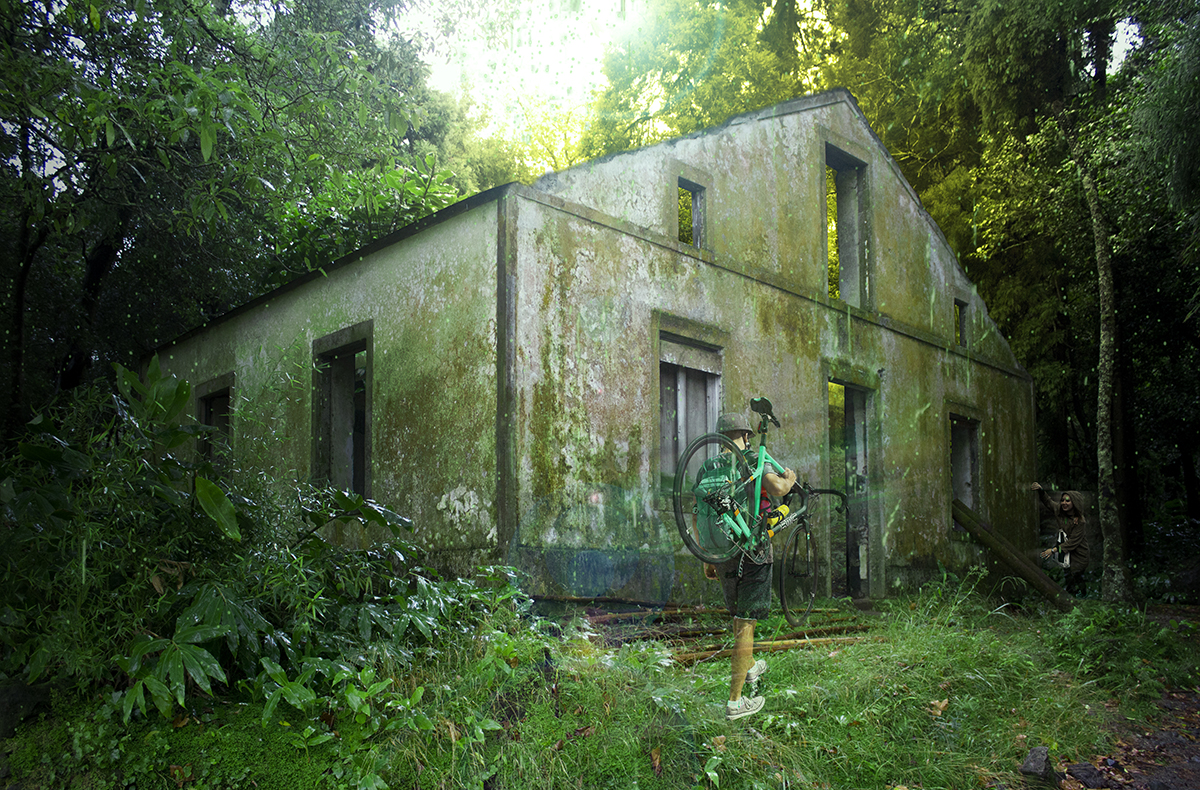Title: Ruin Lust
Location: São Miguel, Azores
Date: 2015
Client: Lagoa das Furnas
CATEGORY: PAPER
Project Type: landscape architecture
Program: visitor centers
Narrative (Synopsis):
"The ruin strikes us as tragic—but not as sad—because destruction here is not something senselessly coming from the outside but rather the realization of a tendency inherent in the deepest layer of existence of the destroyed." —Georg Simmel
From a foreign perspective, the Azorean landscape is an exotic one—seemingly frozen in a time more reminiscent of the Cretaceous than our current Holocene. The thick, yet sweet humidity and mercurial weather—catalyzed by remnants of powerful geologic disruptions, set the stage for a ruinous landscape, both as earthly as the artifice of its vegetation, and the architectural ruins which mottle these crater-lakes. The focus of this project is in Lagoa das Furnas, a volcanic complex with a layered history stretching one hundred millennia. In it lie the remains of past human inhabitants in the form of built structures and the vegetative landscape itself. Seeded by industrious and avid botanists like Jose do Campo, the eclectic—and now overgrown—mix of flora betray past ambitions that were once subservient to the architectural nodes and networks which engendered them. Thus, examining ruination, this landscape project is centered on cycles of death and renewal—the cyclical palimpsest of memory imprinted on both architecture and landscape. Ruin Lust is therefore deployed in three architectural landscape ruins.
Narrative (Extended):
Casa do barco: Balneário | Once a lively lake-side villa, Casa do barco functioned as a retreat and node to explore the once pristine lake. Now, a place of entropy and ruination—possessed by a toxic picturesque that seems to mirror the eutrophication and pollution of the lake itself—nothing of this old structure remains beside a few walls and a storage cellar. Choosing to invert the relationship from an external to an internal enjoyment of the aqueous, and re-connecting with the dual materiality between the black basalt and the white limestone, a private balneário is situated in this landscape ruin—co-opting the overgrown vegetation as both a visual and light screen, flooding the vaulted space with emerald refractions. The side-storage space is punctured and now serves as a sauna with a framing window. On the outside, a peaceful garden is framed by maple sycamores (Acer pseudoplatanus) and the bamboo beyond which makes access to this ruin difficult. However, the presence of this rehabilitated ruin is marked by talk Italian cypresses (Cupressus sempervirens).
Casa da Grená: Galeria | Perched on a hill and hidden away from sight, Casa da Grená, the most popular of the bunch, is a shell of its former self—literally. Its tattered roof and floors make visitor access dangerous, and the halls and windows—once structured to view out into the landscape—have now been obfuscated by vegetation. Yet, the power of this ruin lies with its ability to effortlessly birth an aesthetic of the sublime in any viewer, and thus it objectifies itself as pornography of destruction. Therefore, here the project consists of pushing its ruination further by the combined action of the fast growing honey locust (Gleditsia triacanthos) and the regenerating gingko tree (Gingko biloba). At the first stage there is a path carved through the ruin, and at the end, the establishment of a canopy walk. As a result, visitors are invited to not use the house as a tool to see the landscape (as it once was), or as an object to simply fetishize (as it’s done currently), but to frame the human experience and interaction with layers of memory and vegetation. Any participant thus becomes simultaneously the observed and the voyeur, with Casa da Grená: Galeria as a facilitator for such exchanges.
Casa do jardim: Museu | Once servant and backdrop to Casa da Grená, Casa do jardim is now curiously more accessible to the public, and in any flat transit around the lake—the sole ruin to be photographed and observed. Historical images confirm this visual and operative link. Yet, time and circumstance has unfettered it from its original purpose, and its location at the threshold between the steamy fumaroles and the great vegetation beyond, suggest for it not the fate of another ruin, but one that can bridge the intellectual and awareness gap of its more hidden companions. Hence, Casa do jardim: Museu becomes an exterior/interior experience: the ruin is frozen in time informing on the landscape and architectural ruins alike. In the insightful words of Theodor Adorno, “Eternity appears, not as such, but diffracted through the most perishable.”


















